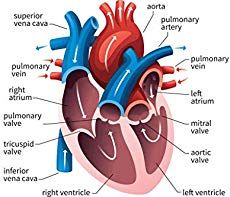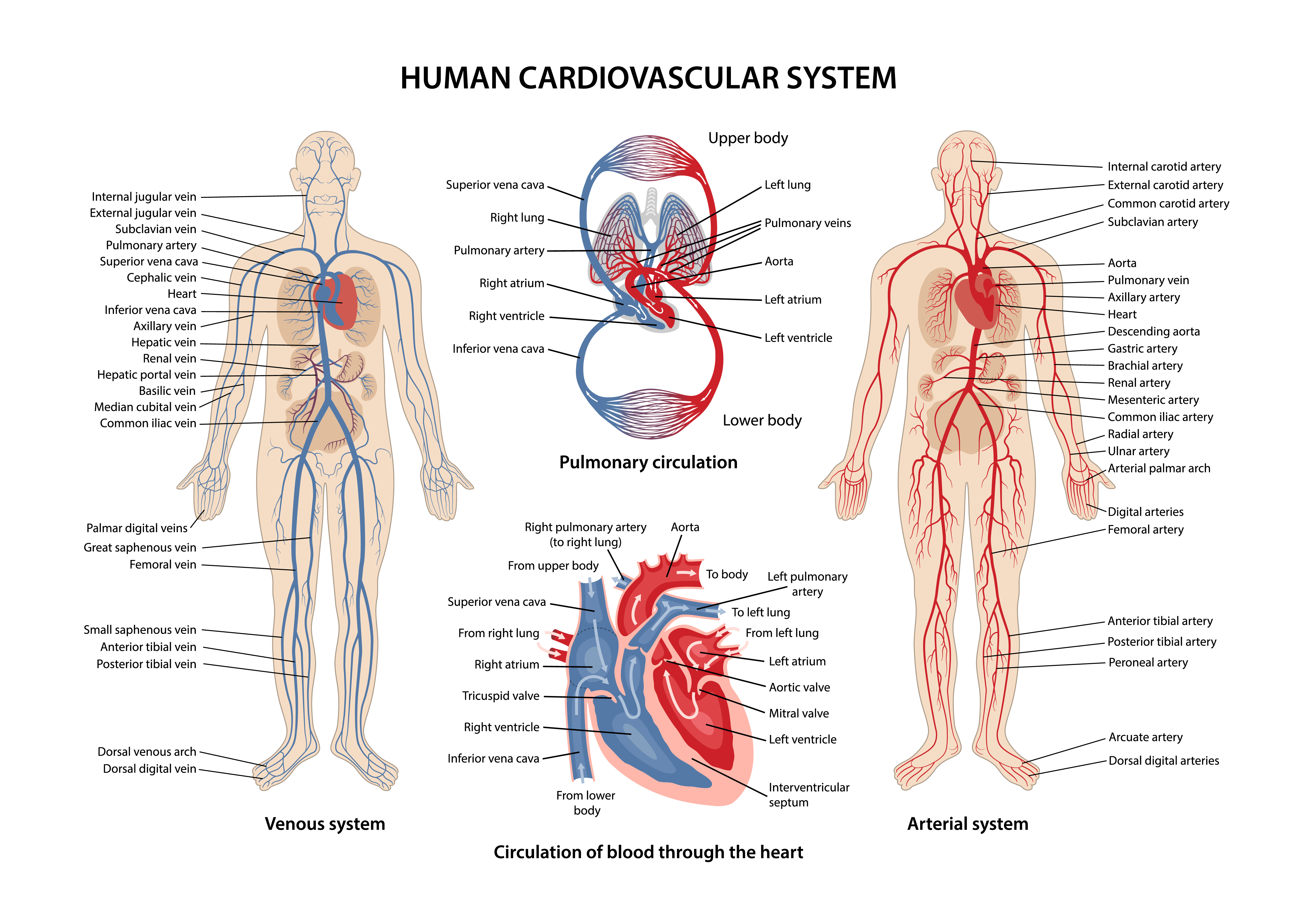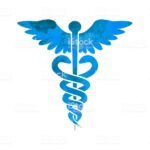The lymphatic System is part of the vascular system along with the cardio vascular system. Recently I posted an article on the cardio vascular system. In that article I mentioned the Lymph system, with a promise to write a future article on it. So here it is. This article is all about the lymphatic system.
What is the Lymphatic System
We hear very little about this system unless some problem arises. However, the importance of this system shouldn’t be under estimated.
The lymphatic system is part of the vascular system and as well as an important part of the immune system. It consists of a large network of lymphatic vessels, including tissues and organs that help rid the body of toxins, waste and other unwanted materials that carry a clear fluid called lymph throughout the body towards the heart. This is the primary function of this system.
What are the functions of the Lymphatic System
In addition to circulating the lymph fluid, the primary functions of this system include:
- Production of immune cells (such as lymphocytes, monocytes, and antibody producing cells called plasma cells) for battling infections.
- Absorption of fatty acids and subsequent transport of fat, and chyle (delivers nutrients), to the circulatory system.
- The removal of excess fluids from body tissues.
How does the lymphatic process battle infection?
The system produces white blood cells, known as lymphocytes. There are two (2) varieties of lymphocyte, T cells and B cells. They both travel by the way of the lymphatic system.
As they make contact with the lymph nodes, they are filtered and become activated by contact with viruses, bacteria, foreign particles, and so forth in the lymph fluid. Commencing from this stage, the pathogens, or invaders, are known as antigens.
As the lymphocytes become activated, they construct antibodies and begin to defend the body. They can conjointly turn out antibodies from memory if they’ve already encountered the precise infectious agent within the past. This is the platform that vaccines work on.
Collections of lymph nodes are concentrated in the armpits, groin, and neck. We become attentive to these on one or either side of the neck when we develop what is commonly known as “swollen glands” in response to an unhealthy condition.
It is in the these nodes that the lymphocytes first (1st) encounter the pathogens, communicate with each other, and set off their defensive response. Activated lymphocytes then pass up the system so that they can reach the bloodstream. They are now, equipped to spread the immune response throughout the body, circulating through the blood.
The lymphatic system and the subsequent action of lymphocytes, of which the body has trillions, form part of what immunologists call the “adaptive immune response.” These are highly specific and long-lasting responses to particular pathogens.
Fact is, without our adaptive immune system, we would face certain death by infection. That’s how prevalent viruses and bacteria are.
The system maintains fluid balance
The lymphatic system helps maintain fluid balance by returning excess fluid and proteins from the tissues that cannot be returned through the blood vessels. The fluid is found in tissue areas and cavities, in the tiny spaces surrounding cells, known as the interstitial spaces. These are reached by the smallest blood and lymph capillaries. This fluid is known as plasma which is the liquid component of blood.
Around 90 percent of the plasma that reaches tissues from the arterial blood capillaries is returned by the veins. The remaining 10 percent is carried back by the lymphatics. Each day, around 2-3 liters is returned. This plasma includes proteins that are too large to be transported via the blood vessels.
A body without this work of the lymphatic system would be terminal within a day. Without the lymphatic system exhausting excess fluid, the tissues would swell, blood volume would be lost and pressure would increase.
Absorption
Most of the fats absorbed from the gastrointestinal tract are taken up in a part of the gut membrane in the small intestine that is specially modified by the lymphatic system.
The lymphatic system has tiny vessels in this part of the intestine that form part of the villi. These finger-like projected structures are made by the very small folds within the permeable surface of the gut.
Lacteals absorb fats and fat-soluble vitamins to make a whitish fluid referred to as chyle.
This fluid contains lymph and blended fats, or free fatty acids. It delivers nutrients indirectly when it reaches the venous blood circulation. Blood capillaries then take up other nutrients directly.
What are the organs of the Lymphatic System
There are five organs of the Lymphatic System. They include:
- The thymus
- The spleen
- The tonsils
- The lymph nodes
- Lymphatic tissue in the small intestine
Let’s take a look at these organs.
Thymus – The thymus is an endocrine gland and is also the main organ of the lymphatic system. Its primary function is to promote the development of specific cells of the immune system called T-lymphocytes (also known as T-cells) which is an extremely important type of white blood cell. When they mature, they leave the thymus and are transported via blood vessels to the lymph nodes and spleen. T-lymphocytes are responsible for cell-mediated immunity, which is an immune response which involves the activation of certain immune cells to fight infection. In addition to immune operation, the thymus also produces hormones that promote growth and maturation.
Spleen – The spleen is the largest of the organs of the lymph system. Its primary function is to clean the blood of damaged cells, cellular debris, and pathogens. As with the thymus, the spleen houses and aids in the maturing of lymphocytes. Lymphocytes destroy pathogens and dead cells in the blood. The spleen is loaded in blood equipped via the splenic artery. The spleen also contains efferent lymphatic vessels, which transport lymph away from the spleen and toward the lymph nodes.
Tonsils – Tonsils consist of an array of lymphatic tissue located in the upper throat region. Tonsils house lymphocytes and different white blood cells referred to as macrophages. These immune cells defend the digestive tract and lungs from disease-causing agents that enter the mouth or nose. Tonsils are often removed due to infection without consequence.
Lymph nodes – As mentioned earlier, lymphatic vessels transport lymph to lymph nodes. Their function is to filter lymph of pathogens, such as bacteria and viruses. They also filter cellular waste, dead cells, and cancerous cells. These nodes house immune cells called lymphocytes. These cells are necessary for the development of humoral immunity (defense prior to cell infection) and cell-mediated immunity (defense after cell infection). Lymph enters a node which is filtered as it passes through channels in the node called sinuses, and leaves the node through a lymphatic vessel.
Lymphatic tissue in the small intestine – This tissue is called Peyer’s patches which are small masses of lymphatic tissue found throughout the ileum region of the small intestine. They frame a crucial part of the immune system by examining intestinal bacteria populations and preventing the expansion of infective bacteria within the intestines.
Diseases of the lymphatic system
The lymphatic system can stop working properly if nodes, ducts, vessels, or lymph tissues become blocked, infected, inflamed, or cancerous.
Lymphoma
Is a cancer that starts in the lymphatic system is known as lymphoma. It is the most serious lymphatic disease.
Hodgkin cancer affects a particular class of white somatic blood cell called Reed-Sternberg cells.
Non-Hodgkin cancer refers to classes that do not involve these cells.
Cancer that affects the lymphatic system is typically a secondary cancer. This means it has proliferated from a primary malignancy, such as the breast, to nearby or regional lymph nodes.
Lymphadenitis
This condition occurs when sometimes, a lymph node swells because it has become infected. The nodes may fill with discharge, creating an abscess. The skin over the nodes may be red or streaky.
Localized lymphadenitis affects the nodes near the infection, for example, as a result of tonsillitis. However, generalized lymphadenitis can happen when a disease spreads through the bloodstream and affects the whole body. Causes range from sepsis to an upper respiratory tract infection.
Lymphedema
If the system does not work properly, for example, an obstruction, fluid may not drain effectively. As the fluid builds up, this can lead to swelling, such as in an arm or leg. This is lymphedema. As a result, the skin may feel tight and hard, and skin problems may occur. In some cases, fluid may even leak through the skin.
Obstruction may result from surgery, radiation therapy, injury, a condition known as lymphatic filariasis, or—rarely—a congenital disorder.
How to keep the lymphatic system healthy
So we’ve taken a look at another fascinating system that keeps our bodies operating smoothly all on its own. Isn’t it wonderful how the body’s systems work together? It behooves us to take the best care possible of our bodies. Let’s be proactive instead of reactive with our health!
In order to keep your lymphatic system healthy, practice the following: drink plenty of water, eat a nutritious diet complete in alkaline foods and vegetables that provide an ample range of vitamins, minerals and nutrients and include healthy fats. Exercise daily, using both aerobic and anaerobic physical activity.
Keeping our lymphatic systems healthy doesn’t require any more than keeping our bodies healthy overall. No need to reinvent the wheel! Let’s just keep the wheel rolling!
Good health!!
Thanks for visiting!
Please feel free to leave any question comment or concerns below



